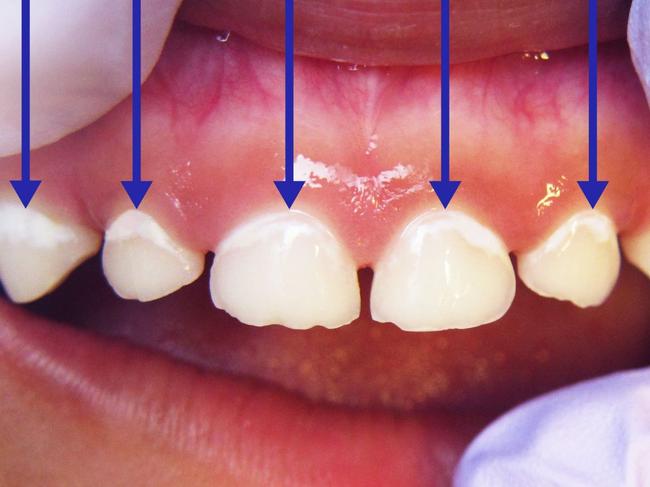Victoria’s most at risk suburbs for poor oral health reveal
A “concerning” rate of Victorian kids have signs of poor oral health, with those in regional and rural areas among them worst. See where kids are most at risk.
Leader
Don't miss out on the headlines from Leader . Followed categories will be added to My News.
Children should be getting their teeth checked by their first birthday as “concerning” data reveals half of all Victorian kids develop signs of tooth decay by age 12, an oral health professional says
It comes as a report conducted by Dental Health Service Victoria revealed 40 per cent of Victorian children aged between five and 10 accessing public dental services had signs of decay, with this going on to impact more than 90 per cent of adults — most of which was “preventable”.
Mildura had the highest rate of 12 year olds with “at least one decayed, missing or filled” teeth in the state with 73 per cent.
Loddon, Ballarat, Golden Plains and Moira rounded out the rest of the top five for decay rates for 12 year olds.
Brimbank had the highest rate for 12 year olds in metropolitan Melbourne with 62 per cent.
Northern Grampians had the highest rate of six-year-old kids with decayed or missing teeth (74.1 per cent), with this also impacting nearly 70 per cent of six year olds in Brimbank.

DHSV Director of Policy Dr Clare Lin said signs of tooth decay could emerge at “very early stages” of a child’s develeopment.
“We encourage oral health checks by 12 months,” she said.
“Often we find children aren’t having oral health checks until they are older or until there’s a real obvious hole in the tooth which is why that early assessment is really important.”
One of the risk factors identified for tooth decay, particuarly in rural areas, was a lack of access to fluoride in water.
Fluoride is added to public water supply to help reduce tooth decay.
While 99 per cent of metropolitan suburbs had access to fluoridated water, this figure sits at about 88 per cent for rural Victoria.
According to the Department of Health, Apollo Bay, Daylesford and Trentham were among the Victorian towns without fluoride in their water.
Dr Lin said the goal was to achieve 95 per cent water flurodation in regional Victoria.
“Overall we do tend to see poorer oral health in those regional and rural areas for a range of reasons and some of them might be due to lower rates of water flurodation,” she said.
“There’s a broad body of evidence that shows water flurodation can prevent tooth decay, particuarly in children.
“It can also be harder to access healthy food and oral hygeine products as well as oral healthcare, so when you overlap that with poorer socio-economic areas that’s when we see those higher rate of disease as well.”
In Victoria gum disease is the fifth most common health problem for adults, with 16 people on average diagnosed with oral cancer every week.
The biggest risk factors for oral cancers include tobacco, vaping and alcohol.
According to the DHSV about 12 per cent of Victorians smoke daily, while about six per cent of the population ran out of money for food in the past 12 months, with food insecurity also “closely associated with poorer oral health”.





